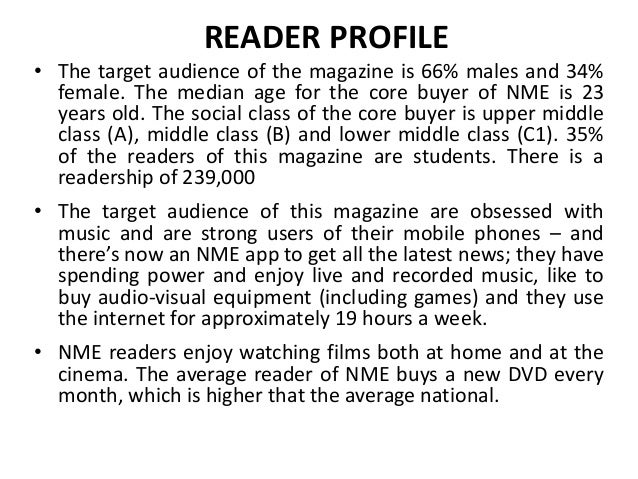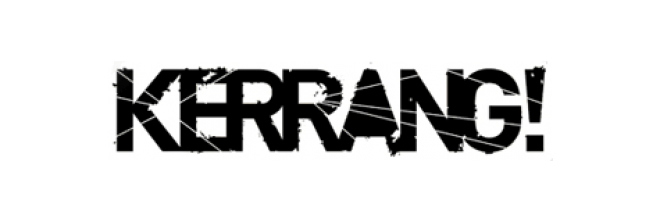
- Style - The style of the typography is very neat and professional, and both the masthead and cover lines are all in capital letters for emphasis and attention.
- Font type - The font has a very tidy style, which connotes professionalism and sophistication
- Range of fonts - It looks like the magazine uses the same font for all of the front cover text, which suggests that this amount of consistency will be present all throughout the magazine.
- Size - The masthead is the most important typography feature, so this is the largest piece of text.
- Colour - The red and purple is a common feature throughout all of the typography, which also consistency, which will create a sense of familiarity with the audience. Red connotes lust and danger which contrasts with the white background and maybe represents the female in the main image. Purple connotes luxury and power, which could also be a representation of the female.
- Case - All of the typography is in capital letters for emphasis.
- Masthead - The masthead follows genre conventions by being all in capital letters to grab attention from the audience, as well as the rest of the text. The colour used for the masthead is purple, which connotes extravagance and power. This gives further connotations of high production values.
- Cover lines - The cover lines follow typical genre conventions by just including names of indie musicians. This is also used in high production value magazines such as Q magazine. The cover lines are positioned around the main image to not take too much attention away from the main subject, yet they gain enough attention to inform the audience on what the magazine will include. The cover lines are a mixture of black and red, which are two colours which connote power, which is maybe a representation for what the magazine is trying to portray. The font used for the cover lines looks professional and the style of it makes it look like it has been outlined in bold for emphasis.
- Puffs/plugs - A photographic puff is used in the front cover by showing a female musician related to the magazines cover. This can be seen as a puff because it is presenting her in a promotional way. Every cover line could be seen as a puff because it is promoting musicians relating to the magazines chosen genre.
- Small print - The small print positioned above the barcode is all in capitals to show the audience that despite its small size, it is still important information. The font is simple to show professionalism.

- Style - The style of the typography is very neat and professional, which adds to the organisation of the image positioning and layout.
- Font type - It looks like there are two different fonts used - one for the subheadings and one for the contents and numbers. It is difficult to make out the contents typography but it looks like all of the text on the page is in capital letters. The slashes used after the some of the subheadings has maybe been done to give the contents page a more interesting appearance. The main features and bonus features are positioned down the right hand side of the page, which has most likely been done because this is the first thing the audiences vision will be drawn to when they open the magazine.
- Range of fonts - There are two different fonts used throughout the contents page. Sans serif is used for all the font to make the contents page look professional.
- Case - The masthead and subheadings are all in capital letters to them stand out more from the small lines of text. The small text (and page numbers) that contains information about what the magazine will include is all in a plain font with lower case letters. This has been done to make the subheadings stand out more.
- Size - The subheadings are the largest pieces of text to gain the audiences attention and inform them on the different categories the featured articles are divided into.
- Colour - Apart from the masthead and issue number, all of the text is black to contrast and stand out from the white background.
- Heading - The heading is all in capital letters to stand out. The font has a plain style, which connotes sophistication.
- Subheads - The subheadings are all emphasised by being large in size and capital letters. Forward slashes are used to make sure there is no white space between the text.
- Small print - Aside from the contents page information, there is no other small print presented on the page. This information is in a plain font with black text to make the appearance of the contents page overall look more professional and follow typical conventions created beforehand.

Style - The style is very professional - the typography is very small and plain text is used to make sure that all of the information fits into the double page spread without disrupting the structured layout.
Font type - The font is sans serif, to make it look professional to connote high production values. It also establishes a house style throughout the magazine.
Range of fonts - There only appears to be one font used throughout the DPS, and it has been decreased/increased in size depending on its purpose.
Size - The size of the text depends on what it is used for - the masthead is the biggest piece of text because it wants to grab the audiences attention and the text used for the article is of a small size to fit all of the information into the designated space.
Colour - The majority of the text is black to stand out against the white background, however the quote is blue to fit in with the occasional graphology presented in the DPS.
Case - The article follows typical conventions - the masthead is in capital letters for emphasis, and the text is in lower case letters to show formality.
- Heading - The heading is made the biggest feature to draw the audiences attention to it as soon as they will open the magazine. The typography is plain to connote professionalism and high production values.
- Subheads - There are no subheadings present on the DPS, but the article is split up by dividing it into paragraphs. This has been done to separate the information and not to bore the audience by not placing a giant section of text onto the page in the form of an essay. Graphology is used at the start of each paragraph to highlight the first letter of each section.
- Byline - Because of the images low quality it is difficult to make out the byline, but it looks as though the authors name may be at the bottom right of the DPS.
- Pull Quotes - There is one pull quote used near the centre of the article to make the appearance of the article more interesting.
- Small print - Aside from the article text and byline, there is not other small print present on the DPS. The text in the article is black to contrast with the plain background.
From my understanding on typical genre conventions for indie music magazines, I know that the byline is either positioned at the bottom of the page or just before the article begins. The style is usually professional to connote high production values, and the text is consistently black to show professionalism. Every heading/masthead used is in capital letters to grab the audiences attention. If an article is featured on a double page spread, it is usually spilt up into paragraphs to let the audience know that each section contains information about a different topic relating the featured indie artist. Pull Quotes are also used often. Puffs/plugs are used in the form of cover lines or an image/several images for promotional purposes. A sans serif font is used throughout the magazine to connote professionalism and sophistication. It also establishes a house style, as it suggests that every page in the magazine will use the same typography. These are all features I would be able to apply to my own work.










































